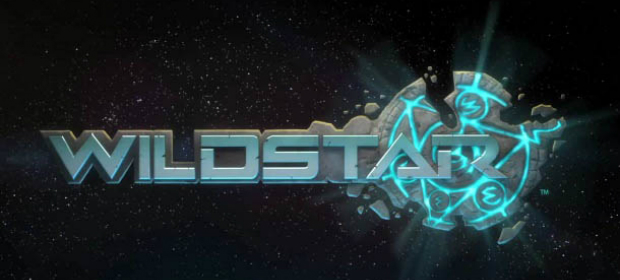It’s no secret that I’ve been anxiously awaiting the arrival of WildStar. For what has felt like years, I’ve been keeping a close eye on the development, pumping myself up for an MMO I couldn’t wait to sink my teeth into. The beginning of June finally saw the release of WildStar and, like many others, I dived head-first into the beautiful, daunting and often intimidating world of Nexus and hopefully, I can prosper on my own merits without needing to find a walkthrough to wildstar to get me by. However, I had a question to answer before I even set foot on digital soil: Who’s feet would I be using?
The character creation in WildStar is mostly what we’re used to. There are 8 races to choose from divided into 2 factions (Humans, Granok, Aurin and Mordesh for the Exiles and Cassian, Mechari, Draken and Chua for the Dominion), and then there are the character classes comprising of Warrior, Spellslinger, Esper, Medic, Stalker and Engineer. This is where WildStar starts to get a little bit different, while staying close enough to the accepted standard that you will easily understand what the different classes do without too much research. I’m going to try to avoid comparing WildStar to the obvious other MMO, but it boils down to having four essential roles spread across the six classes: tank, melee DPS, ranged DPS and healer.
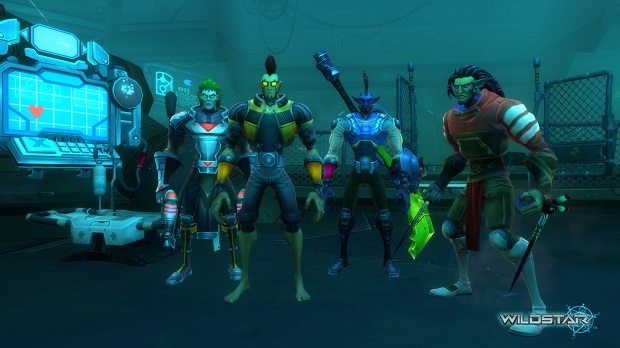
The nice thing about WildStar’s class system is that a single class can cover a couple of different roles. If you’re a Warrior but want to do melee DPS then you can, and you’re not going to be constantly forced into the role of a tank. If you have a competent Stalker in your group, then there’s no reason they can’t perform that role. Granted, a lot of long-standing MMO players might find it difficult to get out of the mindset of automatically assuming that “Warrior equals Tank”, but at least WildStar gives you a decent argument to put forward against anything that you don’t want to do. In fact “Don’t do anything you don’t want to do” could be WildStar’s mantra.
The biggest difference between Carbine’s game and most other MMOs (when it comes to character creation at least) is that along with choosing a race/faction/class combination, you can also choose a Path to go down while you’re playing. These Paths are either Soldier, Explorer, Scientist or Settler, and each have their own unique abilities, quests and advantages.
For example, the character I chose to create (CyberGrim on Eko; come say “Hi!”) is an Explorer and, as such, I tend to get quests that revolve around climbing to the tops of mountains and trees to place a flag and claim the spot for the Dominion. There are also entire quest lines that are only available to a certain Path (or to a group with a person of that path in their number) such as a door that can only be opened by a Scientist, or a secret underground cave system which can only be uncovered by an Explorer. Furthermore, Settlers can get to work in a town to create various different items from crafting stations to buff machines. Everybody gets to add something to the whole team, whether you’re in a group or not.
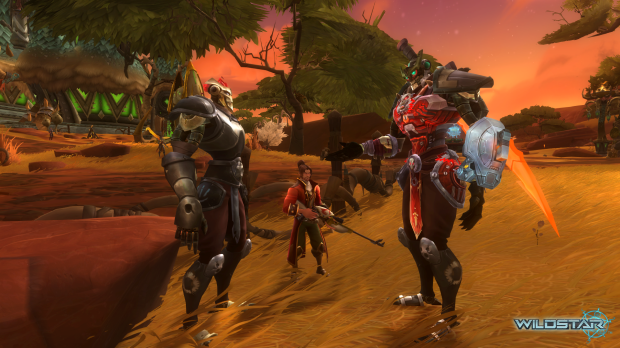
The combat in WildStar is one of the aspects that really drew me to the game in the first place when I saw the DevSpeak video relating to it. In the same way that the rest of the game is 2familiar but different2, the combat works similarly to other MMOs, in that you have to kill enemies using a variety of skills on a button bar along the bottom of the screen – but it’s hugely different in the sense that it’s an active combat system similar to TERA.
If you want to slice through an enemy with your hidden wrist blades, or even just want to smash them over the head with your gigantic sword/axe/hammer, then you don’t necessarily need to target the enemy first. If you mouse over the ability you want to cast/use, you’ll see an area around your character where that ability will do damage. Often this is a small arc or long channel in front of you. Knowing exactly how far away you need to be from an enemy when you attack, as well as where the ability is going to do damage, is the key to combat in WildStar. Any enemy unlucky enough to be inside your damage area will suffer and the combat will begin (if it hasn’t already started due to you being to close to them in the first place).
Similarly to how you’re able to see your own damage area, you can also see the damage area of any enemy who’s currently trying to cast a spell towards you. This telegraph system becomes invaluable when you’re taking on enemies who are levels above you’re character, or just one of the many elite level mobs who are sprinkled in between the normal enemies just to give you a hard time when you’re not paying particularly close attention. Nexus is dangerous, and that’s just one of the things you’re going to have to get used to.
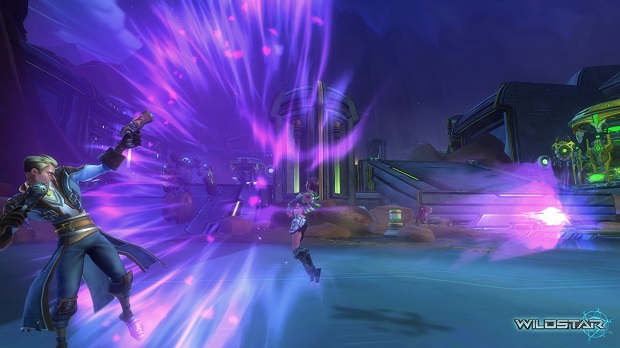
Trade Skills are another element of WildStar that are just recognisable enough to allow veteran MMO players to jump on board without much of a learning curve, but different enough to keep those same veterans interested in what a lot of people find the dullest aspect in a role-playing game. Crafting takes place at crafting tables within settlements and, just as in other games, you’ll be required to bring together a selection of materials in order to craft specific items, either something you want for yourself in order to upgrade a particular gear slot, or something to sell for that all important gold.
In WildStar, however, there’s a third reason to craft items and that becomes apparent when you take a look at the crafting talent tree for whichever profession you’ve chosen to take part in (Weaponsmith, Outfitter, Armorer, Tailor, Technologist, Architect, Mining, Survivalist, Relic Hunter). On the talent tree you’ll notice that there are levels that can only be unlocked by actually crafting certain items. For example, you may learn how to make leather gloves by creating leather pants. What you do with these leather pants once you’ve made them is up to you (you could either sell them, or salvage them for some parts which may be useful for other items); what’s important is that you’ve made them. It’s basically teaching your character, but in a more visually representative way.
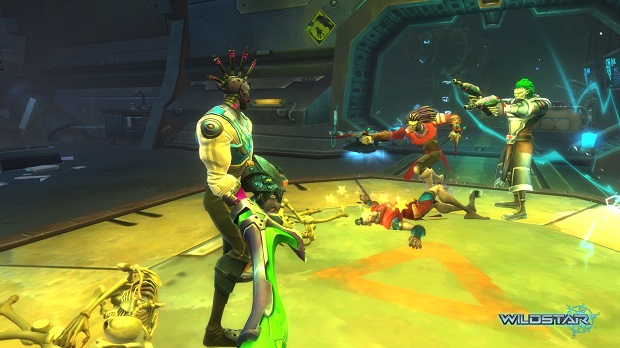
Additionally, when you’re crafting weapons or gear, you can choose to increase the stats of the item while running the risk of the entire crafting process failing and taking all of your materials with it. This risk/reward factor adds a huge amount of possibilities to the whole Trade Skill system as, through the talent tree, you could be the only Weaponsmith in your guild who can add +10 crit to a sword without the whole thing failing, ensuring that people will be coming to you instead of doing it themselves – which obviously has its own monetary rewards.
In keeping with WildStar’s mantra of “Don’t do anything you don’t want to do”, there may come a time when you feel like going out and killing enemies purely for your own benefit. Perhaps you just want to see how many of a specific type of mob you can kill in a given time – and that’s where the Challenges come into play. As you’re walking around Nexus, you can often come across fun little extra things to do which don’t really come under the description of a “side-quest”. Often these will involve killing a certain amount of enemies in a given time limit, with the faster you perform the challenges directly relating to how much of a reward and better medal you get (Bronze, Silver or Gold). The higher your medal, the more items you’ll get as a reward.
The nice thing about these challenges – and pretty much any quest which asks you to kill certain enemies – is that the difficulty of the enemy in question is taken into account too. Taking Pumera as an example: if you kill a normal enemy, it might count for 1 kill; however, if you kill an elite Pumera, it might count for 4 or 5 kills. This means that if you’re striving for those Gold medals, it might be worth your time to find out the stronger enemies, again bringing in the whole risk/reward element upon which WildStar seems to thrive.
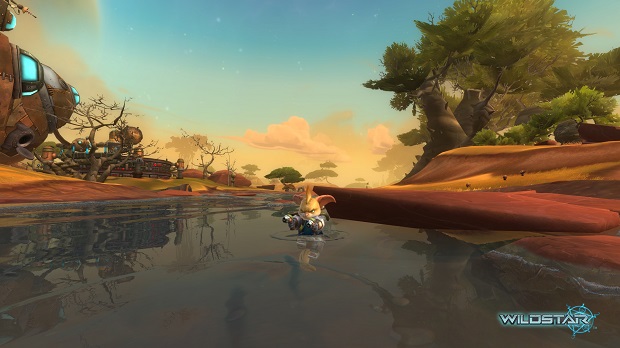
There’s so much to do in WildStar that it can almost be overwhelming at times. Thankfully, even then you don’t need to leave Nexus, and can simply go to your own handy “home away from home” floating high above the ground. Once you arrive in your first city, you will be able to purchase your own home and customise it however you want. My main character being an Outfitter, I chose to plant trees which I can harvest from time to time, as well as a crafting table and items that spawn leather pieces. It’s not much, but there’s a huge amount of scope to it if you’ve got the cash (which I don’t at the moment).
There’s a massive amount of customisation options too, allowing you to choose where you place items, how you place them, what direction they’re facing, how big they are. Pretty much anything you could want to customise regarding your living space, you’re able to do. All this means that you can, if you want, truly create a space that you’re proud of, so that when you invite your friends around for whatever reason, you can show off all of those impressive trophies you’ve collected during your adventures on the ground.
One thing MMOs in the past have gotten wrong (I’m looking at you, Star Wars: The Old Republic) is that there’s not much for players to do once they’ve reached the level cap, which in WildStar’s case is 50. Thankfully, that isn’t a problem here as on top of Questing, Challenges, Trade skills, Path Quests and general exploration of each of the game’s massive zones, there are also Adventures, Raids and the Elder Game.
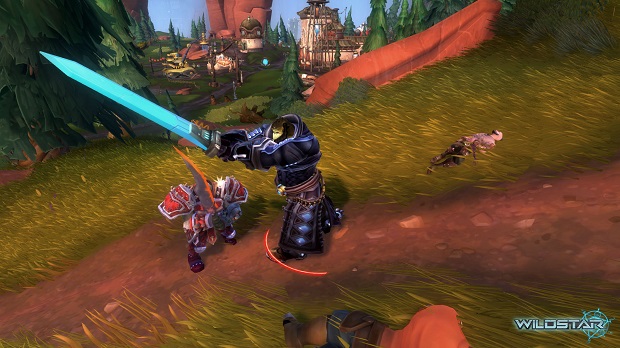
Adventures are instanced areas of the world map for five people. They’re not separate from the main world, they’re just your own version of the same map set inside a virtual reality environment. And because they’re virtual reality, they can ask you to do some pretty crazy stuff. There are multiple different ways to completing an Adventure too – usually centring around whether or not you have a character in your group who follows a particular Path – so even if you go on the same one multiple time, you can expect a totally different outcome.
Raids are just like they are in any other MMO in the sense that they’re instances that 25 – 40 people enter, take on enemies that are almost impossible, and (hopefully) leave with enough loot to fund a developing country for the foreseeable future. Raids are gigantic, with a plethora of mini-bosses, bosses and environmental hazards. You’ll need to make sure you’re helping out with your team (don’t be that guy who goes AFK as soon as the final fight begins) and that you’re paying particularly close attention to WildStar’s telegraph combat system, as its existence means the guys at Carbine Studios have been able to craft some truly mind-blowing scenarios with attacks coming from all directions. They’re easy enough to avoid if you’re paying attention, but they do mean that you have to pay attention. Got those matchsticks ready for propping your eyelids open? Yeah, you’re going to need those.
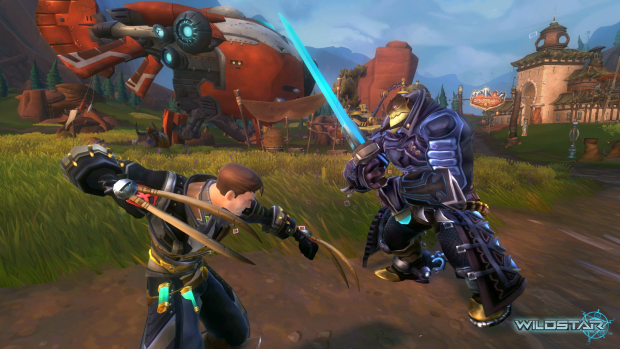
The final thing that you’ll notice about WildStar’s Elder Game is that you (obviously) no longer generate experience from handing in quests and defeating enemies. You do, however, collect Elder Points, which, when you’ve maxed out the bar (which takes the place of the experience bar once you don’t need it any more) you get a single Elder Gem. You then use these Elder Gems to purchase gear and more from the Elder Gem merchant in the capital city. You might think that this sounds a little silly at first, but there have been so many MMOs over the past couple of years where gameplay has just stopped because there’s nothing to do, and if you’re the type of person who either doesn’t like dungeons/raids, or can’t do them due to time-constraints, then having an actual reason to continue playing is a genuine godsend.
VERDICT: WildStar has been in development for a hell of a long time; there were even times when a lot of people thought the worst about it, but what’s come out the other side of it all is a hugely polished game with a hell of a lot of content (and the promise of more to come on a monthly basis), which has the ability to do the impossible and become the new standard for MMOs in the future. The combat is a joy, while you’ll wonder how you managed without the telegraph system. The housing, the Adventures, the Challenges, the Paths, everything in the world of Nexus has been iterated to a point where it sparkles and shines like very few MMOs have before. The launch even when without too much of a hitch (which is almost unheard of in this genre).
If you’re a fan of MMOs but had stopped playing because they were starting to get a little stale, then WildStar might be the game to rekindle that love. There are few issues at the moment with buggy quests and the engine being a little less optimised than I would have expected, but there’s nothing that can’t be fixed in an upcoming patch. If Carbine Studios have started as they mean to go on, then expect WildStar to be around for quite some time.
For the Dominion!

SUPERB. This is the mark of greatness, only awarded to games that engage us from start to finish. Titles that score 9/10 will have very few problems or negative issues, and will deliver high quality and value for money across all aspects of their design.
Review code provided by publisher.


